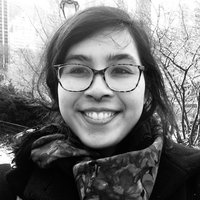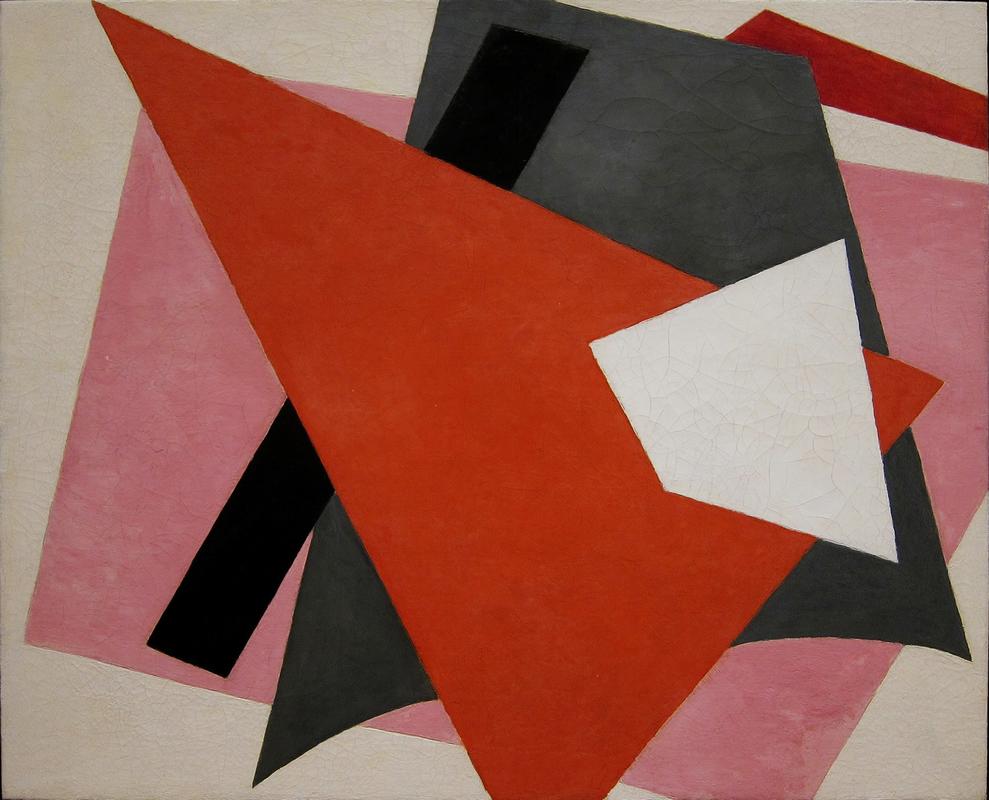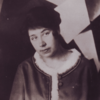More about Painterly Architectonic
- All
- Info
- Shop

Contributor
In 1955, the critic Clement Greenberg said in response to the Suprematist paintings of Kazimir Malevich, that “[Malevich’s Black Square (1915)]…like almost all experiments in art, it failed aesthetically.”
Two years later, in 1917, Lyubov Popova painted Painterly Architectonic. What Malevich and Popova were both trying to do through their work was find a visual language for the communist sentiments of the Russian Revolution. Popova’s Painterly Architectonic was part of a series of paintings created between 1915-1919 that were made in response to Kazimir Malevich’s Suprematist works.
After Lyubov Popova graduated from the Arseniev Gymnasium, a Russian form of rigorous secondary school, she studied art with Stanislav Zhurkovsky in 1907. Between 1909-1911, she traveled. She Saw Mikhail Vrubel’s work in Kiev, and ancient Russian churches and icons near Yuon and Novgorod. In the Winter of 1912, she visited Paris. While there, she studied with Henri Le Fauconnier, Jean Merzinger, and André Dunoyer at La Palette. In 1913, she returned to Russia. And between 1912-1915, the years leading up to Painterly Architectonic, she became concerned with Cubism. Specifically, she became interested in form and the representation of movement in her paintings, but by using a specifically Russian tradition—icon painting. These influences are present in Painterly Architectonic’s play with shape and rhythm.
Lyubuv Popova painted Painterly Architectonic (1917) against the historical context of revolution and abstraction. Then, the Russian avant-garde aligned itself with the new Bolshevik government. The main issue of the Russian avant-garde was to find visual forms for a new, communist world. In Popova’s time period, easel painting was considered bourgeois and abstraction was considered the language of the revolution.
Popova’s outlook on painterly abstraction was that:“I don’t think that nonobjective form is the final form: it is the revolutionary condition of form.”
Sources
- Clement Greenberg. Clement Greenberg: The Collected Essays and Criticism: Modernism with a Vengeance 1957-1969, vol. 4, ed. John O’Brian. Chicago: University of Chicago Press, 1986.
- “Liubov Popova.” Audio about Painterly Architectonic. Museum of Modern Art. Date accessed 1/26/19. https://www.moma.org/collection/works/78444?artist_id=4694&locale=en&pa….
- “Liubov Popova.” Museum of Modern Art. Date accessed 1/26/19. https://www.moma.org/calendar/exhibitions/328.
- “Liubov Popova,” The Guggenheim. Date Accessed 1/23/19. https://www.guggenheim.org/artwork/artist/liubov-popova.
- “Lyubov Popova, Painterly Architectonic, 1917,” Museum of Modern Art, Date accessed 1/26/19. https://www.moma.org/collection/works/78444.
- Sarabianov, Andrei D. “Lyubov Sergeyevna Popova,” Encyclopedia Britannica, acc. 11/16/2018, 2:12 pm https://www.britannica.com/biography/Lyubov-Sergeyevna-Popova
- Scarabionov, Dmitri V. and Natalia L. Adaskina, Liubov Popova. New York: Harry N. Abrams, Inc. 1990 pp. 196
- Tupitsyn, Margarita. Moscow Vanguard Art-1922-1992. Norfolk, Conn: Yale University Press, 2017 pp. 2-3.












